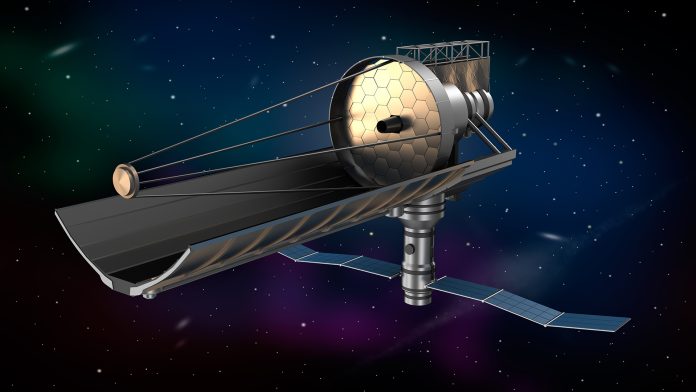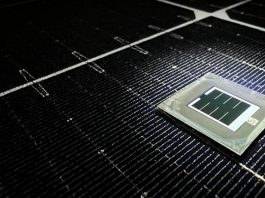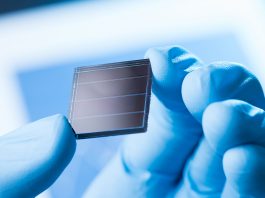Space reflectors could be used to reflect sunlight towards future solar power farms at dawn and dusk, accelerating the transition to net zero.
University of Glasgow researchers have shown that kilometre-wide orbiting space reflectors could boost the output of future large-scale solar farms by reflecting additional sunlight toward them after the Sun has set.
The space engineers used computer simulations to help determine the most effective method of using orbiting solar reflectors to generate additional power.
The paper is published as a preprint in the journal Acta Astronautica.
Reflecting additional sunlight
The computer simulations showed that 20 gossamer-thin reflectors being put into orbit 1,000 kilometres from Earth’s surface could reflect sunlight to solar farms for an extra two hours each day on average.
The sunlight can potentially boost the output of solar farms, especially after sunset when electricity demand is high. The output could be scaled up by adding more space reflectors or increasing their size.
Walker constellation
The space reflectors would maintain an orbit close to the Earth’s terminator line. This is the boundary where daylight on one side of the planet transitions into night on the other side.
The reflectors should sit in an arrangement known as a Walker constellation. These constellations are used in technologies such as satellite communication systems. Here, groups of equally-spaced satellites form rings around the planet to ensure consistent communication with the Earth’s surface.
An algorithm was used to understand how the reflectors could be arranged in the constellation and angled to catch the Sun’s rays most effectively. The arrangement should maximise the additional sunlight reflected to solar power farms around the Earth in the early morning and late evening.
Effectiveness of space reflectors
Dr Onur Çelik, from the University of Glasgow’s James Watt School of Engineering, and the corresponding author of the paper, said: “One of the major limitations of solar power, of course, is that it can only be generated during daylight hours. Putting orbiting solar reflectors in place around the Earth would help to maximise the effectiveness of solar farms in the years to come. Strategically placing new solar farms in locations which receive the most additional sunlight from the reflectors could make them even more effective.”
The team believes that 20 reflectors could generate an extra 728 megawatt-hours of electricity per day. This is equivalent to adding an additional large-scale solar power farm to Earth without the associated cost of construction.
SOLSPACE project
The paper is one of the outputs from SOLSPACE, a University of Glasgow-led research project supported by €2.5m in funding from the European Research Council.
Professor Colin McInnes, SOLSPACE’s principal investigator and a co-author of the paper, said: “The idea of orbiting solar reflectors isn’t new – in fact, it predates even the space age, as the idea of illuminating cities with light from space was first discussed in the late 1920s.
“However, space reflectors have only been demonstrated once back in the early 90s, when a 20-metre aluminium-foil reflector was released from the Russian Mir space station to reflect sunlight back to Earth.
“The SOLSPACE project is working to devise, develop, and demonstrate ideas for orbital reflector technology that could work on a much more ambitious scale to deliver global clean energy services.”
The research was supported by funding from the European Research Council under the European Union’s Horizon 2020 research and innovation programme (grant agreement No. 883730).









